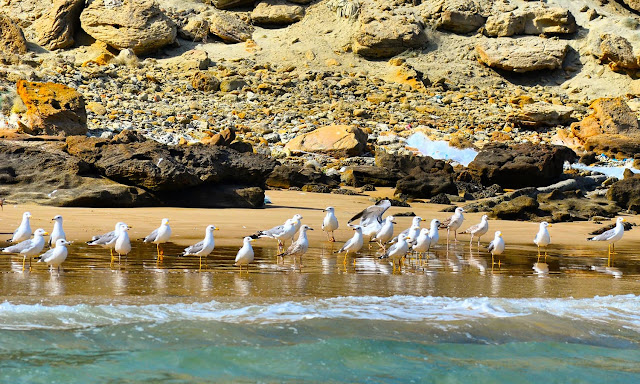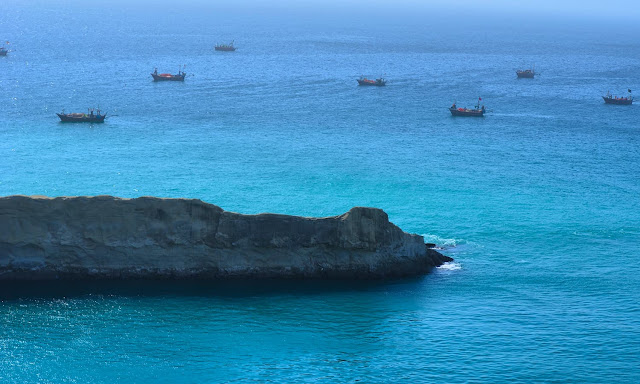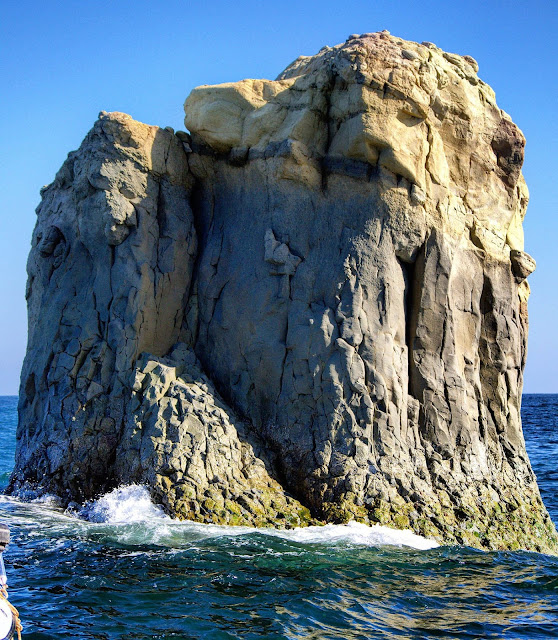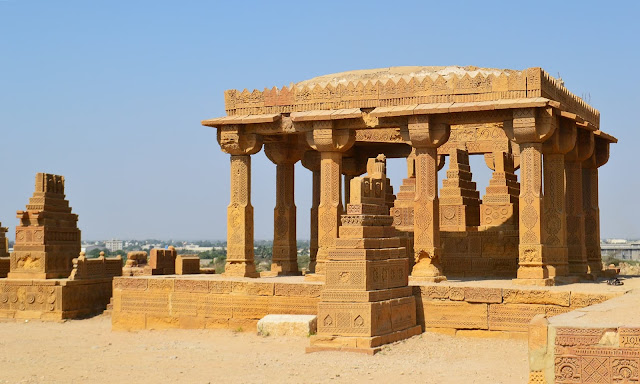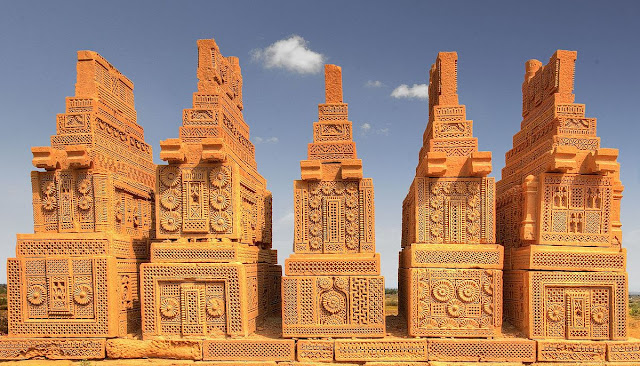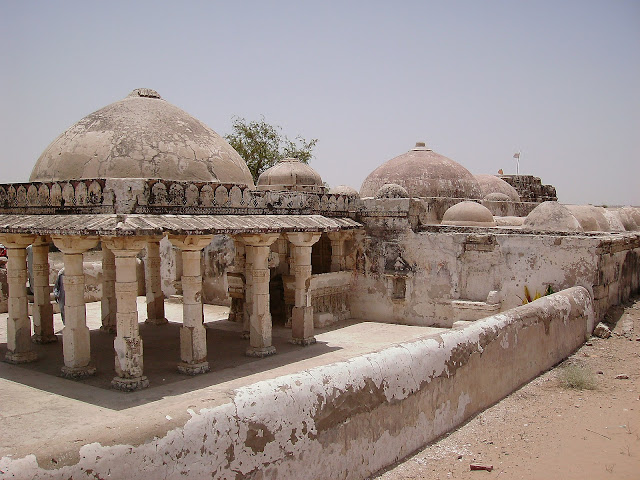Kumrat Waterfall is a majestic abshar. It is not far away, if you stay in Kumrat. The ideal time to visit this point in the evening when sunlight is glowing the waterfall. Thousand of liters of water falling down offering breathtaking view. The high peaks and lush green trees makes this waterfall a perfect view. The crystal clear water rolling down to the surface creating thunderous sounds. It’s a pleasing place where you can enjoy some time to enjoy the pure nature beauty. Its an ideal place for bar-b-que and short picnic. You can find many tuck shops offering, biscuits, cold drinks, snacks, and many other eatable items.
A compendium of interesting places, hidden wonders, Beautiful Places, strange travel destination, tourist attractions.
Thursday, 17 July 2025
Saturday, 14 June 2025
Saifullah Jaheel, Kalam Valley
Today I’m taking you to Saifullah Lake in Kalam Valley. It is mesmerizing site to relax in a soothing environment. The lush green grass offers a majestic view to eyes, looks like you are in hidden paradise. The crystal-clear flowing waters adding the beauty which is fast flowing towards their destination. Watching torrential flowing waters looks a unique experience how nature is powerful. The lake is engulfed in high rise peaks. That is more magical view when sun is playing hide and seek in a tranquil environment.
The best time to visit Saifullah Jaheel is June, to early September when the weather is so pleasant. But you can expect unusual rush till the Mahodand lake, but if you travel to one kiloemeter ahead to Saifullah Jaheel, you will be delighted of no rush here. It’s a pleasant and soothing place. You can enjoy with your family to make picnic here and eat delicious foods like Bar-b-que. For nature lovers, it’s a magical place.
For Bird lovers, you will see different species of birds in the surrounding environment. Bird watch is a great hobby here. Even I saw myself some unique rare species of finches here. Even fishing is also an equal important activity here. So I must recommend to be here for unforgettable experience. If you like this place, don’t forget to share with your fellow nature lovers.
Wednesday, 26 August 2020
Sufed Mahal Marghraz Swat Valley
The White Palace ofMarghazar (Sufed Mahal) was built in 1940 by the first king of Swat, Miangul Abdul Wadud in the small town of Marghazar. The Sufed Mahal is located more than 7,000 feet above sea level on Marghazar Hill, about fourteen kilometers away from the small city of Saidu Sharif. Marghazar was declared as the summer capital of the Swat valley state.
Presently, Sufed
Mahal is serving as a hotel. Miangul Jehanzaib who was the wali of Swat often
spends their summertime at the White Palace of Marghazar Swat valley. Therefore, with the passage of time, the
palace was converted into a tourist resort.
Miangul Abdul Wadud the king of Swat likes the green spot, so the majestic greenish area attracts to him. So, historical sacredness, and above all, he decided to build a summer resort at Marghazar in 1935.
There are twenty
four active capacious ornamented rooms and the Royal Suite (ex-King’s bedroom)
where Queen of England Elizabeth II and Duke of Edinburgh Prince Philip stayed
for three days in 1961.
The magnificent white marble adding the beauty to Royal White Palace and hence name was given to the palace. The Badshah Sahib (King) Miangul Abdul Wadud was a fan of imported marbles, so he decided to bring marble from Agra, bronze from Belgium.
Turkish artisans designed and constructed the palace, completing it in 1941. The first name was Swati Taj Mahal, later on, it was called Motti Mahal and now Sufed Mahal (White Palace). Therefore, different fauna and flora enriched the place and made it a mini zoo as well as a mini botanical garden.
The White Palace has two ample conference halls where King Abdul Wadood used to hold a cabinet meetings along with lobby to have a beautiful view of the garden lawn. Moreover, on the right side, there is a beautiful airy veranda to have a sight of a swirling stream of water.
Thus, on the left
side of the building, a six-roomed Lord's Block for the residence of advisors and ministers.
On the upper portion of the palace, there is the eight-roomed Prince Block; it
is an enclave in trees and shrubs. If you go further upstairs, there is a 12 roomed
Queen's block.
The raw material of
White Palace was imported from Jaypure India, the same quarry that supplied
marble to the Taj Mahal Agra. Moreover, lime (white Chuna) is used as a binding
material in place of cement. It is so compact to be drilled. The height of the ceiling is 30 to 35 ft to give extra strength and ward off heat. Amazingly, ceiling
fans were imported and installed in 1941 and are still working.
Badshah Sahab had
two wives so he built this block in a way that each wife got 3 rooms, 3 servant
rooms, and a separate lawn in her share. The counterpart portion of the second wife
is a replica of the first one. In front of the lawn, there is a single balcony
with marble benches and a table with engraved paintings of grapes.
Miangul Asfandyar Amir Zeb became the owner after the death of King Miangul Wadood. These days Miangul Shahriyar Amir Zeb is the owner of the White Palace. There is also a 200-year-old colossal chinar tree, serving as a canopy for visitors.
Visitors relish the
pleasant weather in summer. They go in huge numbers to enjoy the cold water
springs, peaches, apricots, ripe persimmons, and lush green high rise mountains
peaks. However, in the winter season, the valley attracts visitors for its
unending white snow sheet.
Product You May Interested
- Feel Emotional Freedom! Release Stress, Heal Your Heart, Master Your Mind
- 28 Day Keto Challenge
- Get Your Customs Keto Diet Plan
- A fascinating approach to wipe out anxiety disorders and cure in just weeks, to become Anxiety free, relaxed, and happy.
- Flavor Pairing Ritual Supercharges Women’s Metabolisms
- The best Keto Diet Program
- Boost Your Energy, Immune System, Sexual Function, Strength & Athletic Performance
- Find Luxury & Designer Goods, Handbags & Clothes at or Below Wholesale
- Unlock your Hip Flexors, Gives you More Strength, Better Health, and All-Day Energy.
- Cat Spraying No More – How to Stop Your Cat from Peeing Outside the Litter Box – Permanently.
- Anti-aging nutritional unexplained weight gain, stubborn belly fat and metabolic slowdown. Reach Your Desired Weight in a Week and Stay There.
- Get All Your Healthy Superfoods In One Drink
Tuesday, 28 July 2020
Astola Island, Pasni Pakistan
In the Arabian Sea, approximately 25 km off the coast of Balochistan, a large hidden uninhabited island lies, which is just 7 km long and 2.5 km wide. That is famous as Astola Island (Island of the Seven Hills) with sheer white cliffs surrounded by warm turquoise water. A beautiful slender white beach runs around the periphery of Astola Island. The cliffs shrink inland to make secluded cloves almost like in the Mediterranean.
It is also known as Jezira Haft Talar, which has long been Pakistan’s hidden gem. Astola Island is a mainly untouched site that has all the hallmarks of a tourist getaway. Many thanks to its remote location, the superb beauty has remained unblemished. In 325BC Alexander the Great has sent Arrian people to explore the Arabian Sea and Gulf Sea. However, the Sailors Fleet were frightened at the weird tales about a barren island. The Arrian called it Nosala, and also named it as Carmina, Karmine.
If someone wants to go to Astola Island, then he has to 7 hours of travel from Karachi to Pasni, almost 40 kilometers from Astola Island. Pasni is a seaport in the Arabian Sea, from here, the ultimate destination is 5 hours by boat. Astola the Pakistan largest offshore Island has no facilities only an old lighthouse and a small masjid.
Travelers who visit the secret place of Pakistan, usually camp at the beach and go snorkeling or deep-sea diving and enjoy it chasms and crevices, that is several feet wide. There are several natural caves and coves on the Astola island. The south side slopes off progressively whereas the north face is cliff-like with a sharp vertical drop.
Fisherman catching lobsters, crabs, and oysters between May and September. The best time to visit Astola Island in May and September when a gentle breeze blows throughout the day and the color of the water and pattern of the beach keeps changing with the tide. The water is so clear that one can see the seabed to a depth of about 20 feet. From Mid-June to Mid-August, the moon soon starts, which becomes Island is inaccessible by boat as the sea becomes too rough.
This is mostly a barren island due to the unavailability of freshwater, hence, you will not see too many trees there except a few bushes and scrubs. There is no vegetation on the Island. Nevertheless, plenty of marine life such as corals, dolphins, whales, and diverse fish species. The majestic sandy beaches offering nesting grounds for different bird species such as gulls, godwit, curlews, coursers, plovers, sanderling, endangered green sea turtle and the hawksbill turtle (Eretmochelys imbracata). Therefore, the saw-scaled viper (Echis carinatus astolae) is endemic to the Astola island.
Unfortunately, legal and illegal fishing activities has made big damage to the island’s ecology. The fishermen dump waste and wrecked nets on the coast that gets tangled in the corals and damage them. The sooty gull (Larus hemprichii) once had a main breeding colony on the Astola island, has been getting rid of because of rats introduced from a decade. However, the wild cats left the island to dig out turtle nests and eat the eggs and hatchlings. Furthermore, some ancient ruins of Hindu temple located on the Island known to the Hindus as Satadip.
In 2017, Pakistan declared Astola Island first-ever Marine Protected Area. However, this Asian country is yet to draw up a proper plan on how to handle pollution problems. Therefore, this declaration put some positive aspects, but the ignorance of management raises questions about the protection of the island and the associated biodiversity that is facing multiple issues. In 1982, the Pakistan Government installed a lighthouse on the island for the safety of passing vessels, eventually, it was replaced by a solar-powered in 1987.
The WWF for Nature in Pakistan argued that the development of a management plan for the Astola Island would take time. Pakistan needs to take some time into consideration the socio-economic aspects of local fishers and issues related to livelihood needs. Astola Island needs good practices to be promoted and bad practices should be discouraged. They believe that it is possible to protect the island’s ecology and biodiversity and at the same time promote ecotourism on the island.
Read More – The Tree of Life Kalaloch, Washington
Product You May Interested
- Crush Food Cravings with Odd Water Hack and Melt 62lbs
- Flavor Pairing Ritual Supercharges Women’s Metabolisms
- Unlock your Hip Flexors, Gives you More Strength, Better Health, and All-Day Energy.
- 60 Seconds of Habit! That Reversed Type 2 Diabetes and Melted 56 lbs of Fat
- Boost Your Energy, Immune System, Sexual Function, Strength & Athletic Performance
- Longest Living Doctors Unlocks Fastest Way to Burn Fat
- Perfect Paleo Powder – The Easiest Way You Can Get the Protein & Critical Nutrients Your Body Needs
- Lose weight, burn fat, boost metabolism and immunity, Fight inflammation & Increase your energy with this one ridiculously simple thing.
- The Industry’s First Metabolism Fueling System That Heightens Thermogenesis Even While You Sleep.
Monday, 8 June 2020
Chokundi Cemetery and Tombs - Pakistan
Here are some things you may not know about Chokundi Cemetery. The "Chokundi Cemetery", named after the 600-year-old city of Khumshan, has a rich history buried in itself. The cemetery is located behind the Razzaqabad Police Training Center near Steel Town, about 38 km from Karachi in the Sindh province of Pakistan.
What does Quadrant Mean?
The quadrilateral is called the "four corners". All the tombs here have four corners, which is probably why it is known as "Chokundi Cemetery". The tombs here are said to belong to two tribes, the Jokhio and the Baloch. Domes are supported by pillars.
The Chokundi cemetery is in a way divided into two parts. The number of graves is low in the eastern part and very high in the western part. The locals say that in the eastern part there are graves of Jokhio tribe while in the western part there are graves of Baloch people. They were mostly built during Mughal emperors rule dating back to the 15th and 18th centuries when Islam became a dominant religion.
The Chokundi Cemetery is a masterpiece of architecture and sculpture and is historically one of the most important cemeteries in Pakistan. All the tombs here are made of more sandstone. Rectangular tombs are usually two and a half feet wide, five feet long and four to six feet high. The tombs are regularly carved.
The tombs feature painting, flowers, various designs, headbands, motifs, mounted horsemen, hunting scenes, and latticework similar to the crowns of Egyptian kings. Moreover, the tall domes have been erected on some of the tombs, indicating that ordinary people are not buried in the Chokundi cemetery. The tombs are beautifully elaborate with sandstone carvings.
Men's graves are marked with swordsmanship, horsemanship and swords, daggers, etc., while women's graves are decorated with beautiful ornaments. Some people say about this place that at night, usually after sunset, there are screams and noises, but there is no conclusive evidence as to how true this is.
In Baluchistan and Sindh, this is a remarkable graveyard constructed with buff-colored sandstone. This type of graveyard well preserved in the arid condition, either single graves or groups of eight graved raised on a common platform.
Product You May Interested
- Feel Emotional Freedom! Release Stress, Heal Your Heart, Master Your Mind
- 28 Day Keto Challenge
- Get Your Customs Keto Diet Plan
- A fascinating approach to wipe out anxiety disorders and cure in just weeks, to become Anxiety free, relaxed, and happy.
- Flavor Pairing Ritual Supercharges Women’s Metabolisms
- The best Keto Diet Program
- Boost Your Energy, Immune System, Sexual Function, Strength & Athletic Performance
- Find Luxury & Designer Goods, Handbags & Clothes at or Below Wholesale
- Unlock your Hip Flexors, Gives you More Strength, Better Health, and All-Day Energy.
- Cat Spraying No More – How to Stop Your Cat from Peeing Outside the Litter Box – Permanently.
- Anti-aging nutritional unexplained weight gain, stubborn belly fat, and metabolic slowdown. Reach Your Desired Weight in a Week and Stay There.
- Get All Your Healthy Superfoods In One Drink.
Sunday, 17 May 2020
Bhodesar - The ancient city of Nagarparker
Bhadrishar
Nagri, is now called Bhodesar, is located at the foot of the Karunjhar Hills,
two miles northwest of the city of Nagarparkar. The people living here were
followers of Jainism. After the formation of Pakistan, the followers of Jainism
migrated from here with their idols. Their monuments are still present in the
form of temples. Bhodesar is also commonly known as Bhodesar Nagra. It is also
known, due to which the area was named Nagar Parker.
The city of
Bhodesar was founded in 515 BC. According to the duo of Nokoti Marwar, Hansi
made Pari Nagar the capital of his government. His second brother was Bhodo. He
came and settled in Bhodesar. People belonging to the tribe were settled. The
Jenny people, who were quite wealthy, paid homage to Rana Bhodesar, the ruler
of Thar. About 600 BC, a man named Mahavira founded Jain Dharma.
Some scholars
say that Jains Doctrine is a branch of Hindu Dharma, while some scholars claim
that it is closer to Buddhism. One-third was peaceful people, who considered it
a sin to harm a living being. This was the reason why they used to walk
barefoot and with a cloth over their mouths and cook in the evening and did not
light lanterns, lamps or lamps for lighting in the houses so that no living the thing would be harmed by it
Some
historians also say that the area was named after the queen of the Indus
Valley, "Bhodi". She built a beautiful pond at the foot of the
Karunjhar hills, which gained historical significance due to Sultan Mahmud of
Ghazni. According to tradition, during the expedition of Somnath, Sultan Mahmud
Ghaznavi lost his way while passing through the Thar Desert and he wandered and
reached the hills of Karunjhar.
In a state of
extreme thirst, he and his army reached the pond in search of water, where he
and his soldiers quenched their thirst and stored water for his long journey.
He erected a monument here to commemorate the occasion.
In the 14th or
15th century AD, there was a lot of sodhas and khusos in Parker. The people of
the area were very narrow in their hands. He complained to the king of the
Tughlaq dynasty of India, who ordered Ran Mahmud Begra, the ruler of Gujarat,
to suppress him. Sultan Mahmood defeated these tribes by assassinating the army
but after his return to Gujarat they started revolting again. Therefore, he
attacked again and after restoring law and order in the city he returned to his
capital, Ahmedabad.
Sometime
later, Sultan Mehmood mother was passing by Bhodesar with a caravan when the
Sodhas stopped her caravan and received a bribe. When his mother reached
Ahmedabad, and told this story. Then in the third phase, in 1505, he attacked
Bhodisar. There was a fierce battle in which many of the Sultan's men were
killed And the Sodhas also suffered heavy casualties.
He settled the
Muslim soldiers of his army here and built the "Bhodisar Masjid"
which is located at the same place where Sultan Mahmud Ghaznavi had built a
monument. This magnificent mosque, thirty feet long and twenty feet wide, is an
eternal masterpiece of the architectural art of the followers of Islam.
In the
construction, large marble stones have been used in all the walls and floors,
which are placed on top of each other in such a way that it looks as if someone
has placed them today. The three domes and mahrabs of the mosque are
beautifully constructed from the stones brought from the Karunjhar hills.
The color of
the ancient civilization of Mehran Valley is also in the structure of the
historic Bhodisar Masjid located at the foot of the magical mountains of
Karunjhar. Hlkta is visible.
Further, it is
said that the craftsmen of Jain Dharma took part in the construction of this
mosque at that time by setting the best example of religious tolerance. This
mosque consisting of marble pillars is its own example. In the vast courtyard
of the mosque is a historic cemetery with stone tombs belonging to the soldiers
of Mahmud Hegray who were martyred in the battle with the Khushos.
Despite the
passage of many centuries, this ancient mosque still retains its existence.
Yes, but due to the inattention of the government, the historical heritage had
started losing its identity and the walls of the mosque were slowly crumbling. Thus,
due to government ignorance, this historic mosque was in a dilapidated
condition for a long time.
Minister for
Tourism Syed Sardar Ali Shah visited Bhodesar Mosque along with other
antiquities in Nagarpakar Has been repaired and painted, which has once again
brightened the shape of the mosque. Every year during the rainy season,
thousands of tourists flock to Bhodesar, the city of Nagarpakar, to see the
Bhodesar Mosque, and capture in their cameras.
The memorable
impressions of historical monuments built hundreds of years ago. The beautiful pond is in the form of a lake which fills up after rains and the water stays
there all year-round and in the winter season exotic birds also come and
camp here but due to lack of rain for the last two years, it looks empty.
The author of
the book Old Parker, Magha Ram Ojha, is of the opinion that Sultan Mehmood
Ghaznavi has been staying near this pond for two days and the battle between
Mahmud Shah Hegray and the Sodhas also took place near this pond.
Due to the
desolation of this pond it has also been called a pool of ghosts and people are
afraid to pass by it. In order to save this ancient monument, water can be
arranged in it and it can be turned into a beautiful lake and made a tourist
destination.
In the evening, the bells of the herds of cattle returning from the middle of the Karunjhar Mountain and the sounds of the "walking" of the herdsmen are mesmerizing. The conditions of the region can be changed and thus the arrival of tourists can bring back the heights of this region rich in natural blessings.
Wednesday, 18 March 2020
Pabbi National Forest Park - Punjab Pakistan
It's a beautiful spring day in the park. You just imagine yourself sitting on the wooden bench, the pleasant sunlight on your face, the smell of new coming leaves in your nose & the chirping sound of birds in your ears. What's one word that sums up how you feel when you spend a quiet moment in nature? Pabbi National Forest Park is a sedate and calm place on GT Road located in Sarai-Alamgir, Punjab, Pakistan. It is an ideal and perfect place to take rest and enjoy nature.
The beautiful standing trees adding lush green beauty that will feel you a sense of calmness and relaxation. These days, life is so hectic and everyone looking for a place where they can spend some time reliving their motivations. If you are tired off of seeing the same places near Lahore or Islamabad, then you should kick-in to go to Pabbi National Park. The park design is similar to Rana Hunting Resort. However, it is a less rush area.
This is a lovely place for a day out picnic spot. A beautiful wooden pedestrian bridge built alongside a small natural lake to accommodate visitors to reach another side of the lake. The small and slightly brackish natural lake offers extensive reed marshes and rich aquatic vegetation situated in the Pabbi National Forest Park. There are several Bar-B-Que grills that have been erected at different spots to do a grilling event for visitors. Moreover, a jogging track and walkway lead you to the hilltop to view the sunset. In the spring season, overgrown vegetations spreading all over the park.
The wooden benches and huts have been installed for the sitting arrangement of families. The park authorities have assigned guards for security to protect the families. This gorgeous natural park would be a perfect recreational opportunity for the residents of Sara-i-Alamgir and Kharaian.
What you can do at Pabbi National Forest Park?
A number of things you can do there.
Natural Lake
Jogging Park
Walkways
Wooden Benches and Huts
Wildlife Sanctuary
Wetland Ecosystem
Rides for Kids
Birds Watching
Serenity & Relaxation
The unique variety of rare wildlife species.



















